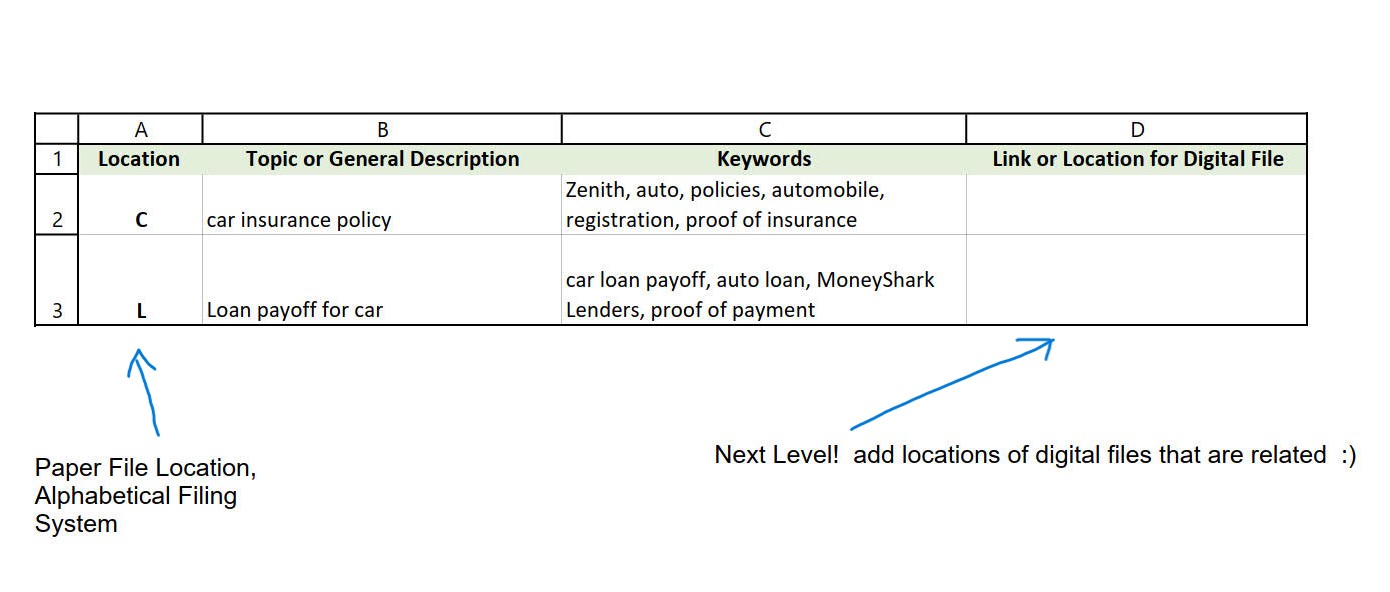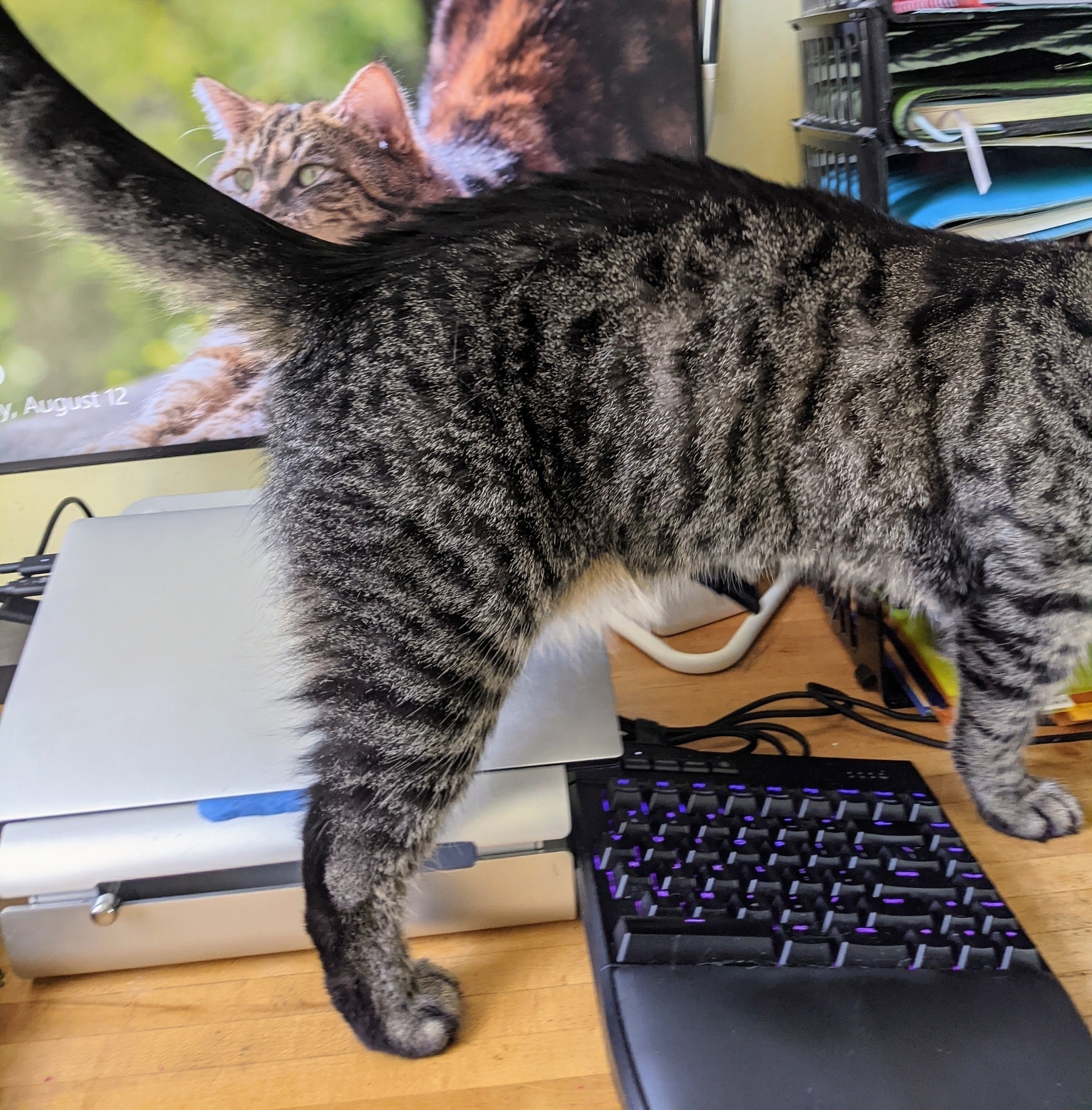The Life-Changing Magic of Keeping a File Index
Filing systems for personal, household files don’t get much love from people who write about household organizing. Most books dealing with household organization brush it off in a page or two, and it often comes down to something like this:
“Throw out all your papers! Go electronic! With the six papers that are left over, file them alphabetically!”
Marie Kondo, in her first book, advised people to dump most of their papers. (GASP!)
Certainly, if you don’t keep papers, you won’t need an excellent filing system.
But what if you do want to keep a lot of papers, AND find them quickly?
Some people collect Lego sets, or porcelain tea cups. I create and collect documents, both paper and electronic. And I know I am not alone in this.
I like being able to pull out papers like my handout for folding and cutting a six-pointed paper snowflake (I forget how to do this every year); or the brochure that came with my split mechanical gaming keyboard* that tells me how to reset the programming, after I mistype and inadvertently create a macro; or the gift passes to a cool local museum when friends visit.
And I like being able to do that QUICKLY: go to my file cabinet, pull out the gift passes, done. No rummaging through piles or having to pay entrance fees for our guests because I couldn’t find the passes.
This is where decent filing systems come in.
I’ll be writing more about some ways to file paper reference materials (this IS after all, the Analog Office) but today I want to focus on:
- the need
- the genius
- the beauty, and
- the brilliance of a digital document that most people at home don’t keep: a file index.
A file index is your Where Is It? document for your files.
It’s like a table of contents for your filing system.
Choose: Invest Predictable, Regular, Short Periods of Time?
Or, Lose: Long, Stressful, Unpredictable Periods of Time (And Money)?
When you can’t find a paper, you lose an unpredictable amount of time running around and looking through piles, and you also lose sometimes significant amounts of money, because some papers are stand-ins for money (guest passes at the museum); or cost you time and money to replace (deeds, titles).
A file index will take a little time to set up, and small amounts of predictable time to maintain. So it is a trade-off.
But I would rather spend a little time to have zero anxiety about finding my papers when I want and need them.
So I spend small, predictable amounts of time entering information into my filing index.
Why Filing Indexes Work So Well
Say you have a paper policy from Zenith Auto Insurance, and say you want to file this alphabetically.
Where does it go? What comes to mind for you, if you were looking for it? Where would you put it?
File it under “Z” for Zenith? Or, “A” for Auto? Or maybe, “I” for Insurance?
But maybe you think of it as car insurance.
How about “C” for Car insurance?
If you file it under “I” for insurance, do you keep your health insurance information in there too? Renter’s or homeowners insurance, does that go there too?
You could; you could have a folder for, “Insurance, Car” and another folder for “Insurance, Health,” and another for, “Insurance, Renters.” Or, you could put health insurance under “H” or even “M” (medical!)… and so on, and so on… aaaargh….!
Enter the file index.
File indexes can be – and indeed of course used to be – analog, but I recommend using a digital format because:
✨ You want it to be searchable. ✨🎉
It’s also a good idea to figure out how you will make your file index accessible to others.
Because I want my husband to be able to find important household files, I print the file index out whenever I update it, so he can have a way to find things in case he can’t get into my computer. You could also share the document and keep it all online, or print out instructions for how to access it in case someone else needs to.
Make Your Own File Index
For your file index, you can use a spreadsheet, a notes program, a single document – as long as it is searchable, and you have a way to share access if these are household files that someone else may need.
It doesn’t matter where the insurance paper goes. It could be under any letter you want.
It matters that you record your decision on a document that maps out where you put your files.
Let’s say you decide that your Zenith Auto Insurance Policy goes under “C” for “Car Insurance.”
So you record on the file index:
Location; Topic or General Description; Keywords
“Location” = the section of the physical file system you need to look in. What is it filed under? That’s your location. For an alphabetical file system, it will be a letter.
“Topic or General Description” = what you call the document; the first phrase that comes to mind when you are looking for the document: if you think of it as your car insurance policy, write “car insurance policy” here
Keywords = MAGIC!! when combined with ✨ search functions 🎉
Filing can be frustrating because often we think of multiple terms for our files. (This happens a lot in homes, less for businesses with structured file naming conventions.)
I might think of it as the “car insurance policy,” my husband might look for “Zenith.”
So with keywords, you list any words that you might think of when looking for the document, that are not already named in your topic section, above. For this one, you might list: “Zenith, auto, policy, policies, automobile, registration, proof of insurance.”

Next level: after keywords, if you have a digital file that corresponds to the paper one, put in the location for the digital file.
Find it all, with file indexes.
Copy and share – the link is here. Never miss a post from the Analog Office! Subscribe here to get blog posts via email.
Wondering how to manage your paper-based or hybrid paper-digital systems? Ask me a question.
NOTES
* I’m not a gamer, but my son recommended this split keyboard to me, and it is AWESOME. Shifting rainbow color backlighting, Cherry MX mechanical key switches (whatever that means, I’m reading from the brochure that I quickly and easily pulled from my files), but the best thing is that I no longer have wrist pain. Plus, the cat can hang out in the middle.
